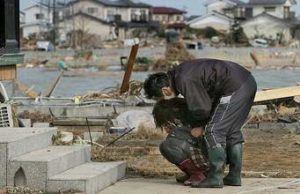This Was the Most Sad and Cryable Moment For Japan So Lets learn To Survive From A Tsunami
Know the warning signs of a tsunami, because every second counts. An earthquake is a clear tip-off—if the ground rumbles and you’re near the ocean, move. Some areas have emergency alarms that sound when a tsunami is about to hit, but most don’t, and a tremor may be the only signal you get.
If you’re on a beach, you can tell a tsunami is coming because the water often gets sucked away from the beach before rushing back onto land. (Think of an extreme version of the way water runs ocean-ward past your ankles before a wave arrives.) At that point, you may have mere seconds to find shelter. Animals rushing away from the shore is another warning sign. Resist the temptation to watch the waves come in.

Wherever you end up, stay there until emergency authorities issue an “all clear.” Tsunamis come in multiple waves, and the first one is rarely the biggest. After the water recedes, hazards remain: electrical wires, rickety bridges, and houses that are still mid-collapse. As a rule of thumb, don’t enter buildings that are still full of water.
If a tsunami is on its way, the safest place is naturally-formed high ground, like a hill or a mountain, as far from the coastline as possible. Otherwise, the roof of a tall, sturdy building will do. (Big beachfront hotels tend to be secure; small wooden houses are not.)
If you can’t get to high ground in time, the last best option is to climb a strong-looking tree as high as you can. Trees often get torn out of the ground during tsunamis, though, so choose wisely. If you can’t find a tree or a structure to climb, cling to something that floats, like a log or a fishing boat. If you’re in a boat on the ocean when the tsunami hits, don’t head to shore—the most damage is done right along the coastline.
If you’re smart, however, you’ll have prepared ahead of time. First, learn whether you’re in a region with a risk of tsunamis. (The National Oceanic and Atmospheric Administration can tell you the risk of an earthquake or tsunami in your area.) Devise an evacuation plan that would get you to the nearest high ground fast. Don’t count on roads being accessible, since they might be overcrowded or damaged from an earthquake. It doesn’t hurt to have a disaster supply kit with food, water, and first-aid materials. Learn to swim.
Source: Howto.com, Japan saving People Wiki, Disaster Releif
Picture Source : Google :: Video source: Youtube
